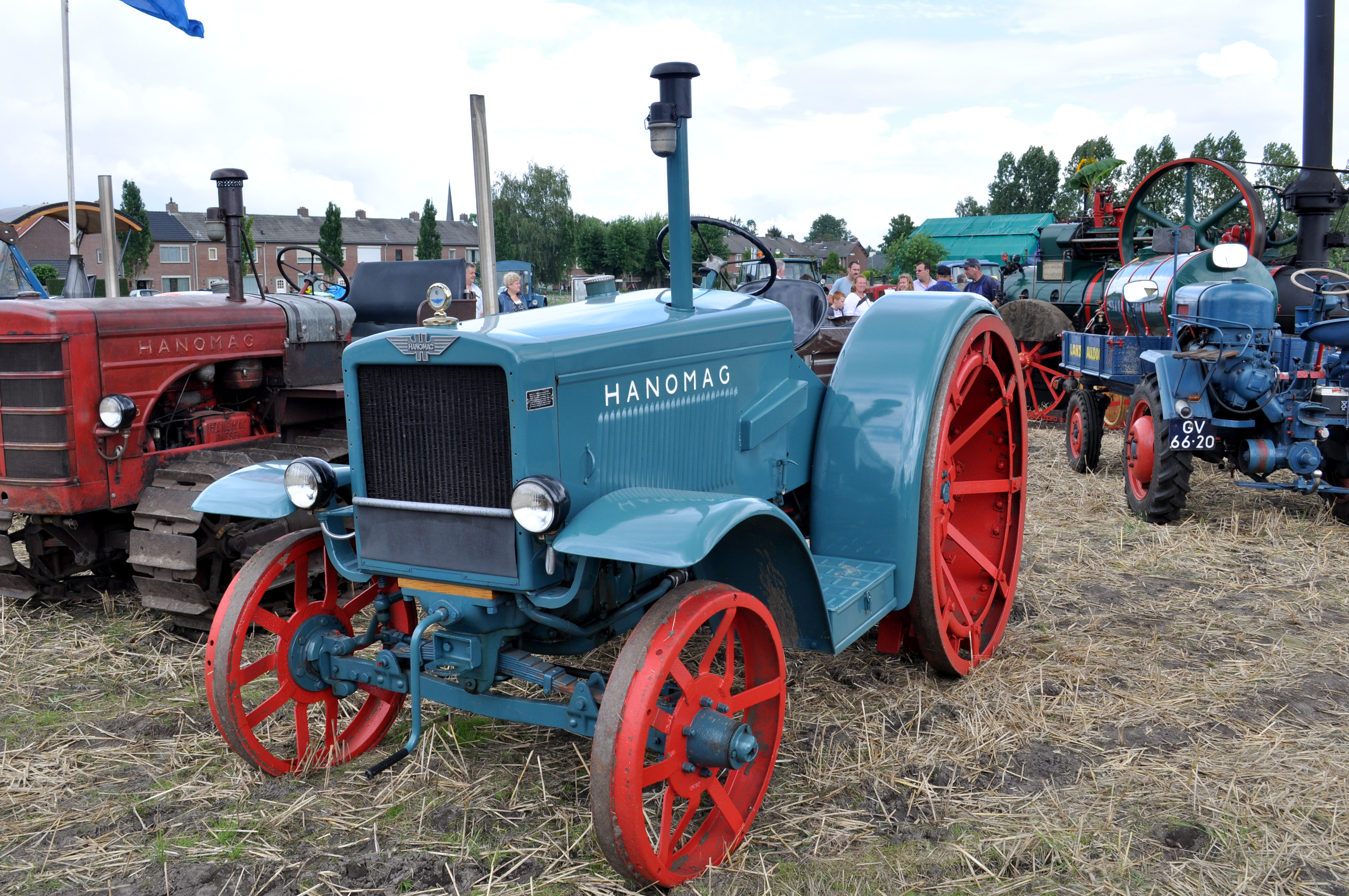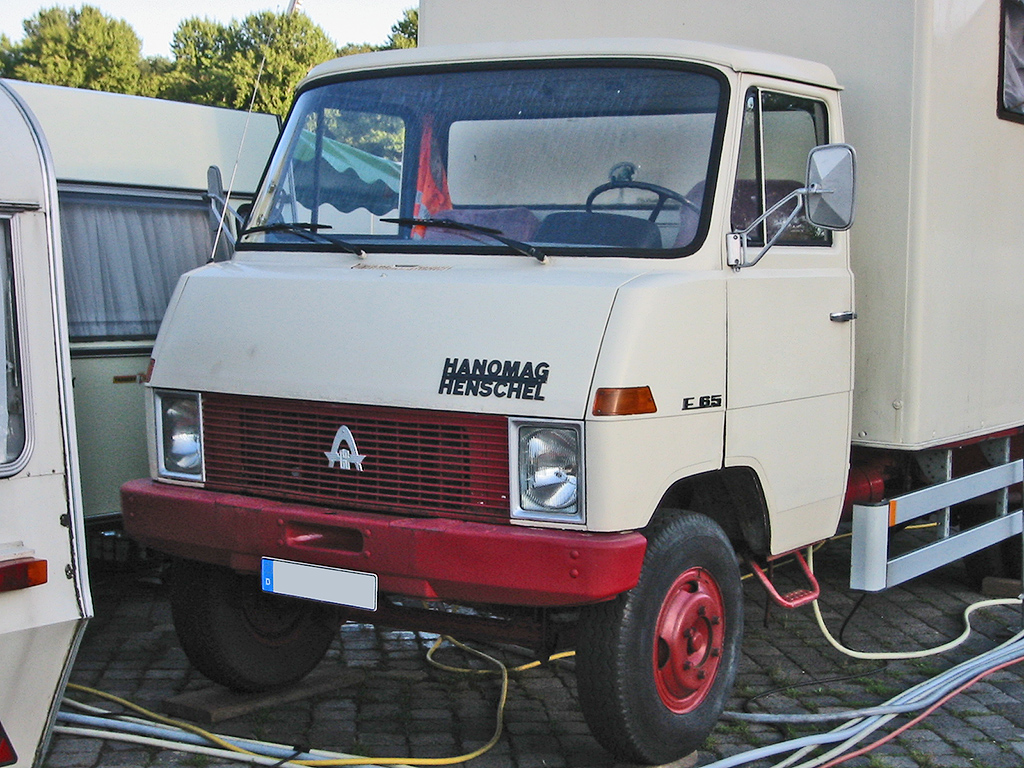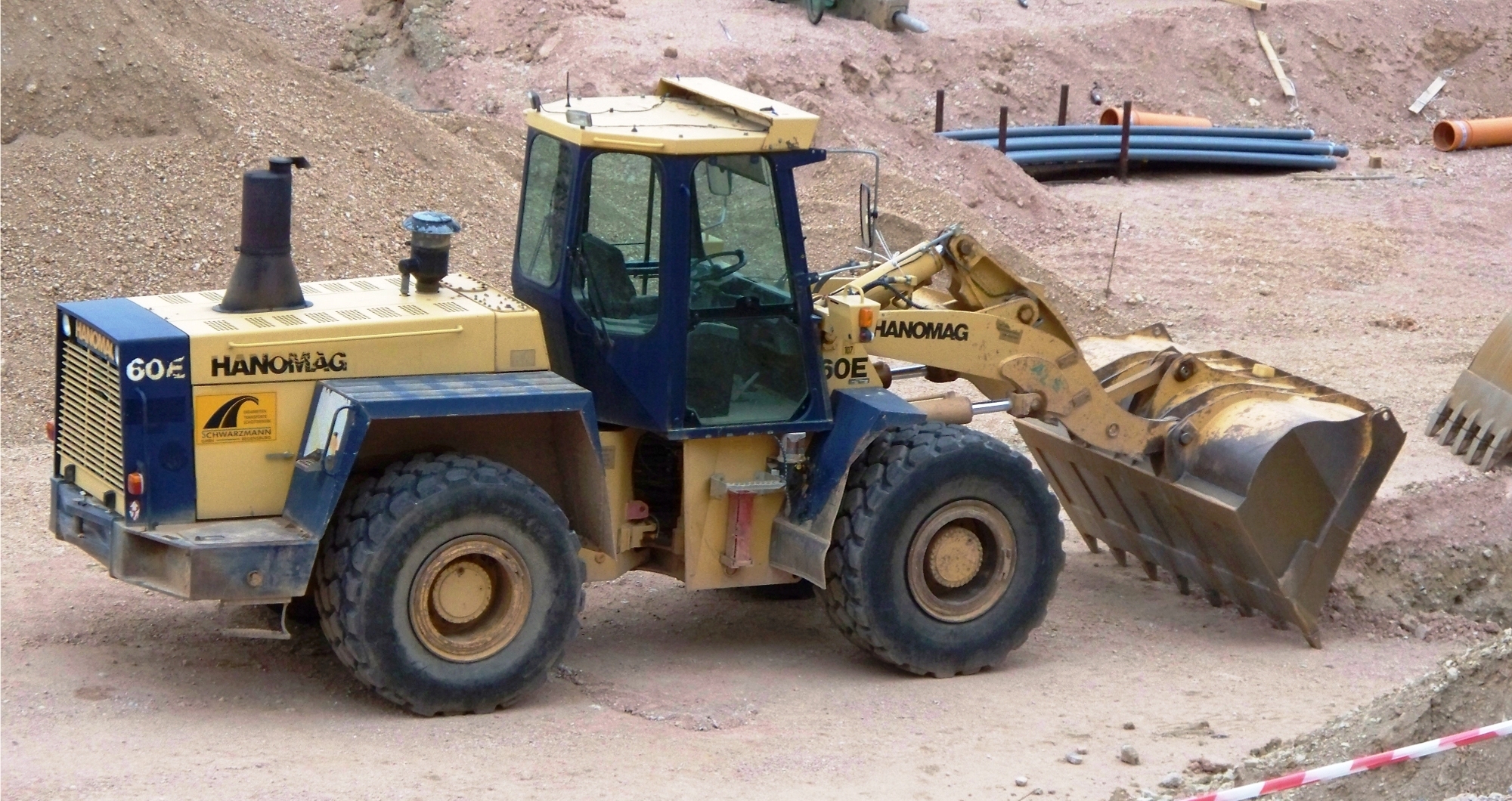Hanomag on:
[Wikipedia]
[Google]
[Amazon]
Hanomag (Hannoversche Maschinenbau AG, ) was a German producer of
 The company dates back to 1835 when Georg Egestorff founded in Linden near Hanover a company called ''Eisen-Giesserey und Maschinenfabrik Georg Egestorff'' to build small
The company dates back to 1835 when Georg Egestorff founded in Linden near Hanover a company called ''Eisen-Giesserey und Maschinenfabrik Georg Egestorff'' to build small


 In 1912 Hanomag started the production of ploughs with up to 80-horsepower (kW) benzene engines. In 1924, the first farm tractor WD 26 (WD) with a 26-horsepower (kW) four-cylinder benzene engine was presented to the market. In 1931, the first diesel tractor RD 36 with a 36-horsepower (kW) four-cylinder engine, and of capacity was made. Hanomag was the market leader in 1939 and the early 1950s. In 1951, a series of new tractors were developed, based on a modular system with 2-,3-, and 4-cylinder engines. From 1962 until the cessation of production in 1971, only four-stroke diesel tractors were built.
From 1912 to 1971, more than 250,000 machines from 12 to 92 horsepower ( to kW) left the factory halls in Linden. In addition, there were manufacturing facilities in Argentina and license agreements with Spanish industrialists.
In 1912 Hanomag started the production of ploughs with up to 80-horsepower (kW) benzene engines. In 1924, the first farm tractor WD 26 (WD) with a 26-horsepower (kW) four-cylinder benzene engine was presented to the market. In 1931, the first diesel tractor RD 36 with a 36-horsepower (kW) four-cylinder engine, and of capacity was made. Hanomag was the market leader in 1939 and the early 1950s. In 1951, a series of new tractors were developed, based on a modular system with 2-,3-, and 4-cylinder engines. From 1962 until the cessation of production in 1971, only four-stroke diesel tractors were built.
From 1912 to 1971, more than 250,000 machines from 12 to 92 horsepower ( to kW) left the factory halls in Linden. In addition, there were manufacturing facilities in Argentina and license agreements with Spanish industrialists.

 By the 1920s, the market for steam road vehicles was in terminal decline, and Hanomag looked to cars as the future, particularly economy models. In 1925, they launched the Hanomag 2/10, a open two-seater with a mid-mounted single-cylinder water-cooled engine. Named ''Zweisitzer Limousine'' (two-seat limousine) by the company, its rounded front and rear gained it the nickname '' Kommissbrot'' for its resemblance to a loaf of Army bread. Although made in large numbers, 15,775 in total, it did not make much money for the company and in the late 1920s the railway locomotive division was sold to
By the 1920s, the market for steam road vehicles was in terminal decline, and Hanomag looked to cars as the future, particularly economy models. In 1925, they launched the Hanomag 2/10, a open two-seater with a mid-mounted single-cylinder water-cooled engine. Named ''Zweisitzer Limousine'' (two-seat limousine) by the company, its rounded front and rear gained it the nickname '' Kommissbrot'' for its resemblance to a loaf of Army bread. Although made in large numbers, 15,775 in total, it did not make much money for the company and in the late 1920s the railway locomotive division was sold to
 In 1964, Rheinstahl took over
In 1964, Rheinstahl took over  The farm tractor operation was sold to
The farm tractor operation was sold to
 In Hanover, the company is producing wheel loaders ranging from 54 to and since 2005 also has been producing wheeled excavators from 14 to 22 tons. Thanks to the European Technical Center (EUTC), these correspond to the latest state of technology. In Hanover, the company develops construction machines which meet varied requirements of customers all over Europe as well as for certain products also worldwide.
In Hanover, the company is producing wheel loaders ranging from 54 to and since 2005 also has been producing wheeled excavators from 14 to 22 tons. Thanks to the European Technical Center (EUTC), these correspond to the latest state of technology. In Hanover, the company develops construction machines which meet varied requirements of customers all over Europe as well as for certain products also worldwide.
Komatsu Hanomag
All about Hanomag
Preserved Hanomag Steam Locomotives
Additional Preserved Hanomag Steam Locomotives
* {{PM20, FID=co/045169, TEXT=Documents and clippings about, NAME=
steam locomotive
A steam locomotive is a locomotive that provides the force to move itself and other vehicles by means of the expansion of steam. It is fuelled by burning combustible material (usually coal, oil or, rarely, wood) to heat water in the loco ...
s, tractors, trucks and military vehicles in Hanover
Hanover (; german: Hannover ; nds, Hannober) is the capital and largest city of the German state of Lower Saxony. Its 535,932 (2021) inhabitants make it the 13th-largest city in Germany as well as the fourth-largest city in Northern Germany ...
. Hanomag first achieved international fame by delivering numerous steam locomotives to Finland
Finland ( fi, Suomi ; sv, Finland ), officially the Republic of Finland (; ), is a Nordic country in Northern Europe. It shares land borders with Sweden to the northwest, Norway to the north, and Russia to the east, with the Gulf of Bo ...
, Romania
Romania ( ; ro, România ) is a country located at the crossroads of Central, Eastern, and Southeastern Europe. It borders Bulgaria to the south, Ukraine to the north, Hungary to the west, Serbia to the southwest, Moldova to the east, a ...
and Bulgaria
Bulgaria (; bg, България, Bǎlgariya), officially the Republic of Bulgaria,, ) is a country in Southeast Europe. It is situated on the eastern flank of the Balkans, and is bordered by Romania to the north, Serbia and North Mac ...
before World War I and making of first tractor Hanomag R26 in 1924 in Germany. In 1925, they added automobiles to their line, additionally moving in 1931 into the production of construction machinery. Since 1989, the company has been part of the Komatsu company.
History
 The company dates back to 1835 when Georg Egestorff founded in Linden near Hanover a company called ''Eisen-Giesserey und Maschinenfabrik Georg Egestorff'' to build small
The company dates back to 1835 when Georg Egestorff founded in Linden near Hanover a company called ''Eisen-Giesserey und Maschinenfabrik Georg Egestorff'' to build small steam engine
A steam engine is a heat engine that performs mechanical work using steam as its working fluid. The steam engine uses the force produced by steam pressure to push a piston back and forth inside a cylinder. This pushing force can be ...
s. They soon started making farm machinery
Agricultural machinery relates to the mechanical structures and devices used in farming or other agriculture. There are many types of such equipment, from hand tools and power tools to tractors and the countless kinds of farm implements that ...
and in 1846 built their first railway locomotive
A locomotive or engine is a rail transport vehicle that provides the motive power for a train. If a locomotive is capable of carrying a payload, it is usually rather referred to as a multiple unit, motor coach, railcar or power car; the ...
for the Royal Hanoverian State Railways The Royal Hanoverian State Railways (German: ''Königlich Hannöversche Staatseisenbahnen'') existed from 1843 until the annexation of the Kingdom of Hanover by the Kingdom of Prussia in 1866. At that time its railway network, which comprised 800&nb ...
. By 1870 they had made 500 locomotives and in 1871 changed their name to ''Hannoversche Maschinenbau Actien-Gesellschaft vorm. Georg Egestorff, Linden vor Hannover''. Road vehicle
A vehicle (from la, vehiculum) is a machine that transports people or cargo. Vehicles include wagons, bicycles, motor vehicles (motorcycles, cars, trucks, buses, mobility scooters for disabled people), railed vehicles ( trains, trams), ...
s followed when in 1905 they received a contract for steam waggons for the German army.
Tractors

Cars

 By the 1920s, the market for steam road vehicles was in terminal decline, and Hanomag looked to cars as the future, particularly economy models. In 1925, they launched the Hanomag 2/10, a open two-seater with a mid-mounted single-cylinder water-cooled engine. Named ''Zweisitzer Limousine'' (two-seat limousine) by the company, its rounded front and rear gained it the nickname '' Kommissbrot'' for its resemblance to a loaf of Army bread. Although made in large numbers, 15,775 in total, it did not make much money for the company and in the late 1920s the railway locomotive division was sold to
By the 1920s, the market for steam road vehicles was in terminal decline, and Hanomag looked to cars as the future, particularly economy models. In 1925, they launched the Hanomag 2/10, a open two-seater with a mid-mounted single-cylinder water-cooled engine. Named ''Zweisitzer Limousine'' (two-seat limousine) by the company, its rounded front and rear gained it the nickname '' Kommissbrot'' for its resemblance to a loaf of Army bread. Although made in large numbers, 15,775 in total, it did not make much money for the company and in the late 1920s the railway locomotive division was sold to Henschel & Son
Henschel & Son (german: Henschel und Sohn) was a German company, located in Kassel, best known during the 20th century as a maker of transportation equipment, including locomotives, trucks, buses and trolleybuses, and armoured fighting vehicl ...
of Kassel.
A more conventional car, the 3/16PS, and the first diesel engined tractors, came in 1928, taking the company back into profit. Hanomag were badly hurt by the drop in trade in 1929 and built a large stock of unsold vehicles. Things improved in 1930 and the company got 14 per cent of the domestic car market, second place behind Opel
Opel Automobile GmbH (), usually shortened to Opel, is a German automobile manufacturer which has been a subsidiary of Stellantis since 16 January 2021. It was owned by the American automaker General Motors from 1929 until 2017 and the PSA ...
, but in 1931 a new crisis came when the banks called in a loan. The factory was mortgaged to Hannover City and the Vereinigte Stahlwerke
The Vereinigte Stahlwerke AG (VSt or Vestag, ''United Steelworks'') was a German industrial conglomerate producing coal, iron, and steel in the interbellum and during World War II.
Founded in 1926, economic pressures (decreasing prices and ex ...
trust and the company relaunched as Hanomag Automobil und Schlepperbau GmbH.
For 1932, a new small car, the 1.1 Litre, renamed the ''Garant'' in 1934, was announced and sold well, allowing two-shift working to be introduced and it was joined by the larger 1.5 litre Rekord (a name later used by Opel
Opel Automobile GmbH (), usually shortened to Opel, is a German automobile manufacturer which has been a subsidiary of Stellantis since 16 January 2021. It was owned by the American automaker General Motors from 1929 until 2017 and the PSA ...
) in 1933, with independent front suspension. A diesel Rekord was shown at the 1936 Berlin Motor Show.
The Hanomag 1.3 litre was introduced in 1939 and had unitary body, an innovative feature for that time. It was studied by Volvo
The Volvo Group ( sv, Volvokoncernen; legally Aktiebolaget Volvo, shortened to AB Volvo, stylized as VOLVO) is a Swedish multinational manufacturing corporation headquartered in Gothenburg. While its core activity is the production, distributio ...
engineers and influenced the construction of the Volvo PV 444 passenger car.
Military vehicles
DuringWorld War II
World War II or the Second World War, often abbreviated as WWII or WW2, was a world war that lasted from 1939 to 1945. It involved the World War II by country, vast majority of the world's countries—including all of the great power ...
, the car plant made military vehicle engines, a military version of their heavy tractor renamed the SS-100, and half track troop carriers. The Hanomag 20 B, a four-wheel-drive Small Unit-Personnel Carrier was produced from 1937 until 1940 (circa 2000 built) under the parentage of Stoewer (as the R180, R200 and Type 40). Capacity problems by Stoewer resulted in co-production by both BMW (as the 325) and Hanomag. Together, the three manufacturers made about 10,000 units. The special four-wheel-steering
Steering is a system of components, linkages, and other parts that allows a driver to control the direction of the vehicle.
Introduction
The most conventional steering arrangement allows a driver to turn the front wheels of a vehicle using ...
system was fitted on most models. Operating a "lock-level" between the front seats, made the steerable rear axle turn sideways to a certain angle.
The single most important and iconic military vehicle to be designed and built by Hanomag during World War II was the Sd.Kfz. 251 half-track (commonly called simply "the Hanomag" but this has been questioned, and may have been only a postwar label. German officers referred to them as SPW 'Schützenpanzerwagen, or armored infantry vehicle' in their daily orders and memoirs.) with a total production numbering just over 15,000. Built to protect and transport the Panzergrenadier
''Panzergrenadier'' (), abbreviated as ''PzG'' (WWII) or ''PzGren'' (modern), meaning ''Armoured fighting vehicle, "Armour"-ed fighting vehicle "Grenadier"'', is a German language, German term for mechanized infantry units of armoured forces who ...
mechanized infantry forces, it was by far the most common German armoured troop-carrying vehicle of World War II, and a direct precursor to the armoured personnel carrier
An armoured personnel carrier (APC) is a broad type of armoured military vehicle designed to transport personnel and equipment in combat zones. Since World War I, APCs have become a very common piece of military equipment around the world.
Acc ...
s of today. In comparison to the most common Allied half-track of the war, the M3 Half-track, the Sd.Kfz. 251 was slower and lower-powered, but with thicker, sloping side armour provided better protection; the flat-sided M3 was, at one point, panned as the "Purple Heart Box" for being unable to stop 7.92mm Mauser bullets at close range, while the Hanomag's sloping side armour deflected Allied bullets with no similar issue.
Post-war production resumed, making trailer units, followed by tractors and, in 1949, a 1.5 ton truck. Although prototypes were made, no cars were produced postwar. Rudolph Hiller, who had been president of Phänomen trucks, joined the board and restructured the company by arranging for it to join the Rheinstahl consortium in 1952.
Merger and split
 In 1964, Rheinstahl took over
In 1964, Rheinstahl took over Henschel-Werke
Henschel & Son (german: Henschel und Sohn) was a German company, located in Kassel, best known during the 20th century as a maker of transportation equipment, including locomotives, trucks, buses and trolleybuses, and armoured fighting vehicle ...
and in a reverse of history the company was merged with Hanomag.
 The farm tractor operation was sold to
The farm tractor operation was sold to Massey Ferguson
Massey Ferguson Limited is an American agricultural machinery manufacturer. The company was established in 1953 through the merger of farm equipment makers Massey-Harris of Canada and the Ferguson Company of the United Kingdom. It was based in ...
and in 1969 the truck making division of Hanomag-Henschel went to Daimler Benz, leaving the Hanover works making earth-moving machinery for Massey Ferguson.
In 1989, the world's second largest construction machine manufacturer, Komatsu, bought a share of Hanomag AG and, since 2002, Komatsu Hanomag GmbH has been a 100% subsidiary of the global company.
Construction machinery
 In Hanover, the company is producing wheel loaders ranging from 54 to and since 2005 also has been producing wheeled excavators from 14 to 22 tons. Thanks to the European Technical Center (EUTC), these correspond to the latest state of technology. In Hanover, the company develops construction machines which meet varied requirements of customers all over Europe as well as for certain products also worldwide.
In Hanover, the company is producing wheel loaders ranging from 54 to and since 2005 also has been producing wheeled excavators from 14 to 22 tons. Thanks to the European Technical Center (EUTC), these correspond to the latest state of technology. In Hanover, the company develops construction machines which meet varied requirements of customers all over Europe as well as for certain products also worldwide.
Hanomag in Argentina
In 1960, Cura Hnos began to build a billet factory from an electric furnace on the premises, which he later suspended for associating with Rheinstahl Hanomag, from Germany, to manufacture tractors. The new company by the merger, used the industrial warehouse of Granadero Baigorria, while the administration and factory of the new company was built. Models produced * R 40 A/B * R 40 RCE / RCT * R 46 * R 55 * R 57 Brillant * R 60 * R 75 Super * L 28See also
* Eicher tractor * Lanz Bulldog *Daimler-Benz
The Mercedes-Benz Group AG (previously named Daimler-Benz, DaimlerChrysler and Daimler) is a German multinational automotive corporation headquartered in Stuttgart, Baden-Württemberg, Germany. It is one of the world's leading car manufactu ...
* Tempo
In musical terminology, tempo ( Italian, 'time'; plural ''tempos'', or ''tempi'' from the Italian plural) is the speed or pace of a given piece. In classical music, tempo is typically indicated with an instruction at the start of a piece (ofte ...
* Force Motors, formerly Bajaj Tempo, produced Hanomag products in India.
References
External links
Komatsu Hanomag
All about Hanomag
Preserved Hanomag Steam Locomotives
Additional Preserved Hanomag Steam Locomotives
* {{PM20, FID=co/045169, TEXT=Documents and clippings about, NAME=